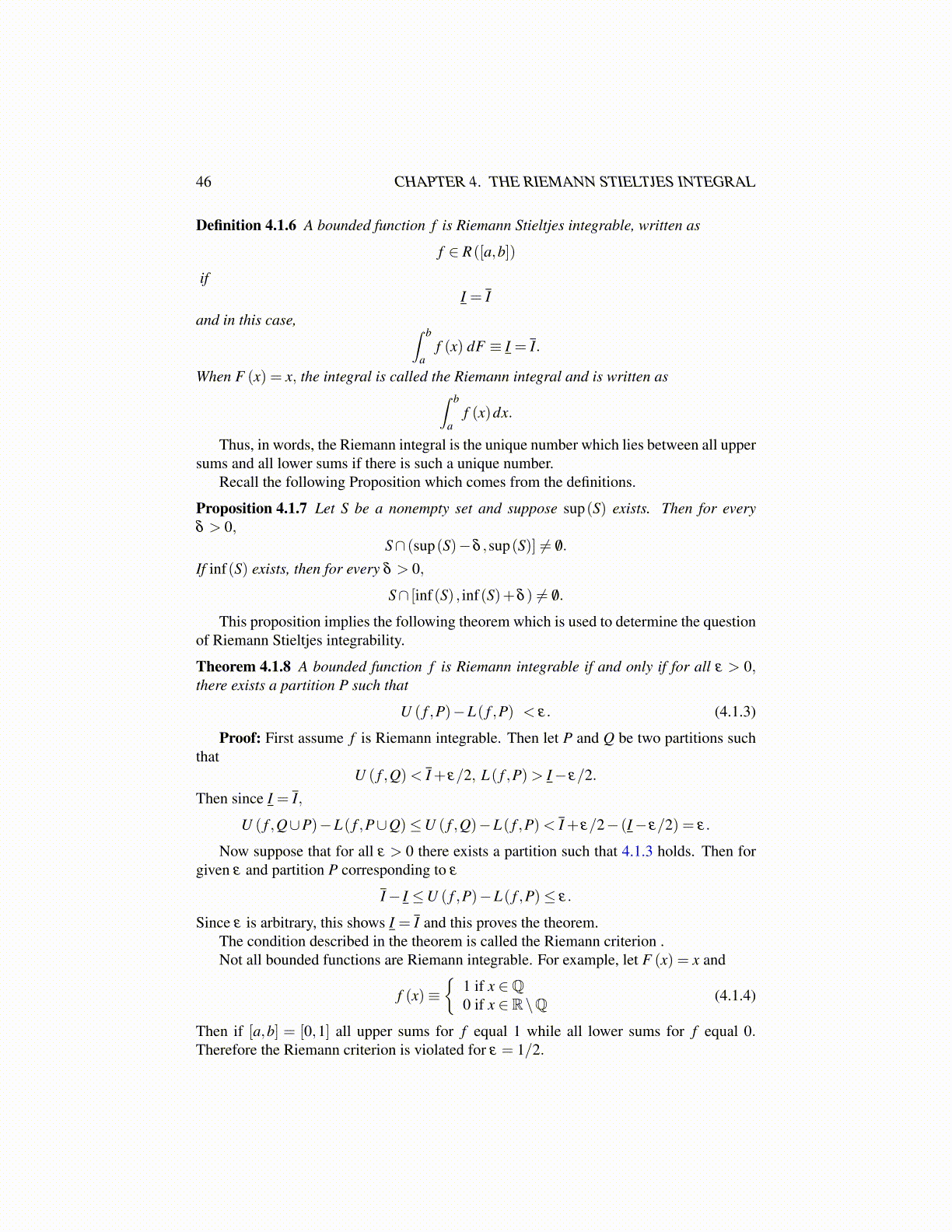
46 CHAPTER 4. THE RIEMANN STIELTJES INTEGRAL
Definition 4.1.6 A bounded function f is Riemann Stieltjes integrable, written as
f ∈ R([a,b])
ifI = I
and in this case, ∫ b
af (x) dF ≡ I = I.
When F (x) = x, the integral is called the Riemann integral and is written as∫ b
af (x)dx.
Thus, in words, the Riemann integral is the unique number which lies between all uppersums and all lower sums if there is such a unique number.
Recall the following Proposition which comes from the definitions.
Proposition 4.1.7 Let S be a nonempty set and suppose sup(S) exists. Then for everyδ > 0,
S∩ (sup(S)−δ ,sup(S)] ̸= /0.If inf(S) exists, then for every δ > 0,
S∩ [inf(S) , inf(S)+δ ) ̸= /0.
This proposition implies the following theorem which is used to determine the questionof Riemann Stieltjes integrability.
Theorem 4.1.8 A bounded function f is Riemann integrable if and only if for all ε > 0,there exists a partition P such that
U ( f ,P)−L( f ,P) < ε. (4.1.3)
Proof: First assume f is Riemann integrable. Then let P and Q be two partitions suchthat
U ( f ,Q)< I + ε/2, L( f ,P)> I− ε/2.Then since I = I,
U ( f ,Q∪P)−L( f ,P∪Q)≤U ( f ,Q)−L( f ,P)< I + ε/2− (I− ε/2) = ε.
Now suppose that for all ε > 0 there exists a partition such that 4.1.3 holds. Then forgiven ε and partition P corresponding to ε
I− I ≤U ( f ,P)−L( f ,P)≤ ε.
Since ε is arbitrary, this shows I = I and this proves the theorem.The condition described in the theorem is called the Riemann criterion .Not all bounded functions are Riemann integrable. For example, let F (x) = x and
f (x)≡{
1 if x ∈Q0 if x ∈ R\Q (4.1.4)
Then if [a,b] = [0,1] all upper sums for f equal 1 while all lower sums for f equal 0.Therefore the Riemann criterion is violated for ε = 1/2.